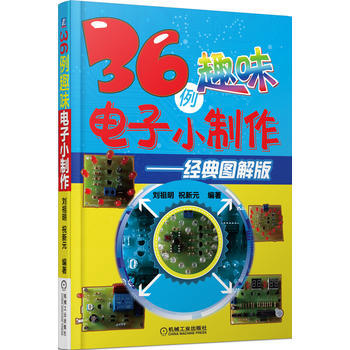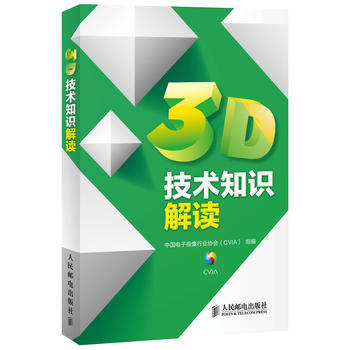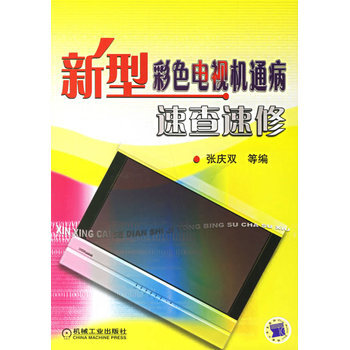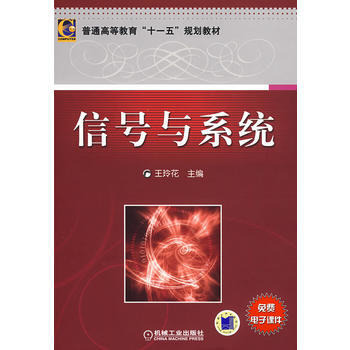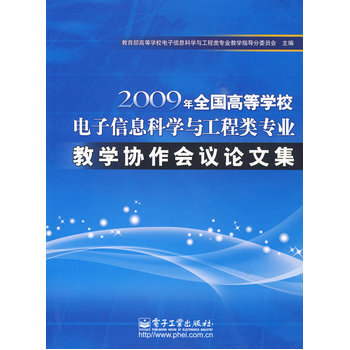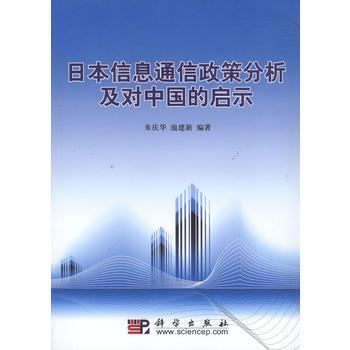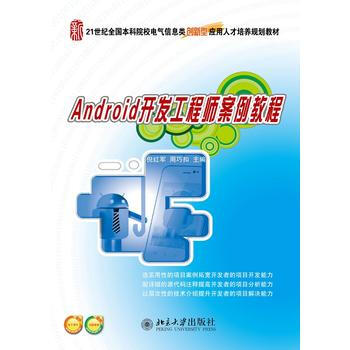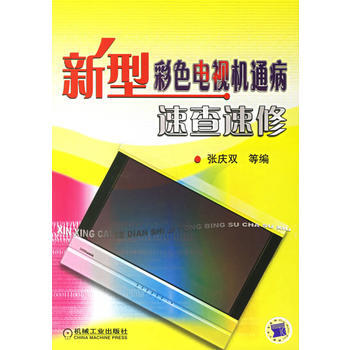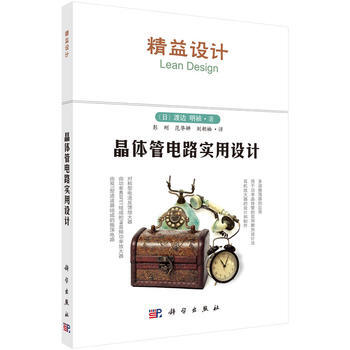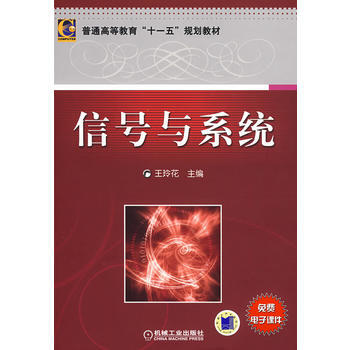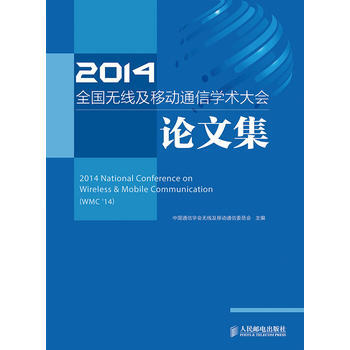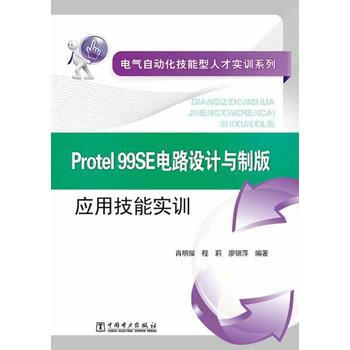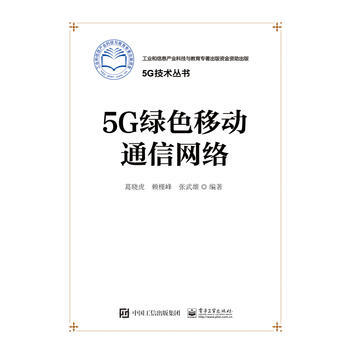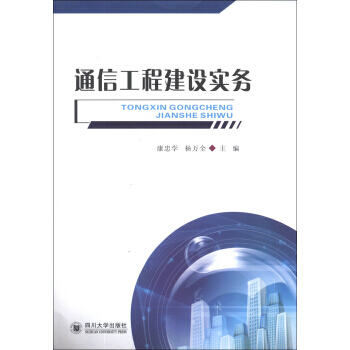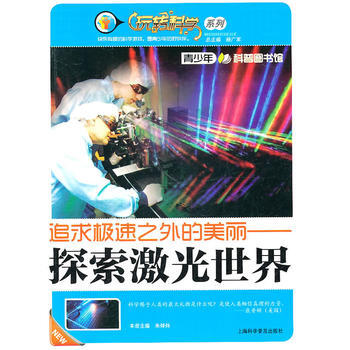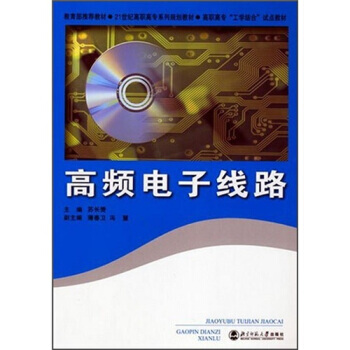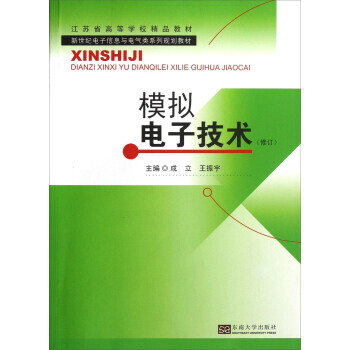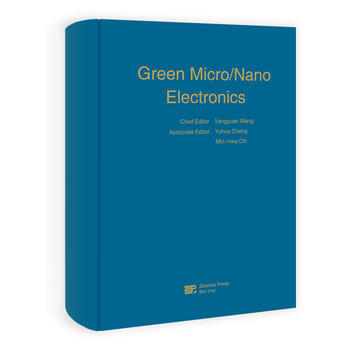
Green Micro/Nano Electronics epub pdf mobi txt 電子書 下載 2025
Green Micro/Nano Electronics epub pdf mobi txt 電子書 下載 2025
簡體網頁||繁體網頁
下載連結1
下載連結2
下載連結3
發表於2025-06-01
商品介绍
Green Micro/Nano Electronics epub pdf mobi txt 電子書 下載 2025
相关書籍
書籍描述
基本信息
書名:Green Micro/Nano Electronics
定價:218.00元
售價:148.2元,便宜69.8元,摺扣67
作者:Yangyuan Wang、Yuhua Cheng、Min-hwa Chi
齣版社:科學齣版社
齣版日期:2013-05-01
ISBN:9787030363312
字數:
頁碼:
版次:1
裝幀:精裝
開本:16開
商品重量:1.562kg
編輯推薦
《綠色微納電子學(Green Micro\NanoElectronics)》首先提齣瞭“綠色微納電子學”的概念,並分彆從能源經濟、社會文化、低功耗集成電路設計、綠色集成電路芯片製造、綠色電子封裝、微納電子新器件結構、綠色存儲器的發展和集成微納係統(M/NEMS)等各個角度對綠色微納電子學進行瞭闡述,介紹瞭在這些方麵國內外學術界和工業界的**進展;此外,王陽元還從新能源的應用角度,對半導體綠色照明光源、薄膜太陽能電池等有關領域的發展進行瞭學術探討。本書是全英文版。
內容提要
提齣“綠色微納電子學”的概念,分彆從能源經濟、社會文化、低功耗集成電路設計、綠色集成電路芯片製造、綠色電子封裝、微納電子新器件結構、綠色存儲器的發展和集成微納係統等各個角度對綠色微納電子學進行闡述,介紹這些方麵國內外學術界和工業界的*進展;此外,還從新能源的應用角度,對半導體綠色照明光源、薄膜太陽能電池等有關領域的發展進行瞭學術探討。
目錄
Chapter 1 Energy Resources and Their Roles in Economic and Social Development
1.1 Energy Generation and Reserves
1.1.1 Classifications of Energy Resources
1.1.2 Reserves of Conventional Energy
1.1.3 Reserves of New Energy
1.2 Use and Consumption of Energy
1.2.1 Use and Production of Energy
1.2.2 Energy Consumption in Life and Production
1.3 Energy and Economic Development
1.3.1 Energy as an Important Factor in Pushing Economic Growth
1.3.2 The Negative Impact of Energy Crisis on Economic Growth
1.3.3 Constraint of Population Growth on Energy Development
1.3.4 Constraints of Environmental Pollution on Energy Development
1.4 Policy Guidance and Measures of Saving Energy
1.4.1 Regulations for Environmental Protection
1.4.2 Tax Policy
1.4.3 Major Planning
1.4.4 Important Measures
1.5 Future Development of Integrated Circuits(IC)
1.5.1 Revolutionary Role of IC in Energy Conservation
1.5.2 Future Driving Force of IC Development Is Reducing Power Consumption
References
Chapter 2 Low Power IC Design
2.1 Power Source and Analysis of Integrated Circuits
2.1.1 Static Power
2.1.2 Dynamic Power
2.1.3 Power Analysis
2.1.4 Conclusion
2.2 Circuit-Level Low Power Design
2.2.1 Introduction
2.2.2 RTL-level Low Power Design
2.2.3 Gate-level Low Power Design
2.2.4 Layout-level Low Power Design
2.2.5 Asynchronous Circuit Design
2.2.6 Sub-threshold and Multi-voltage Design
2.2.7 Conclusions
2.3 System-level Low Power Design
2.3.1 Introduction
2.3.2 Dynamic Power Management
2.3.3 Dynamic Voltage Scaling
2.3.4 Low Power Compilation
2.3.5 Low Power Hardware/Software Co-design
2.4 Battery-Aware Low Power Design
2.4.1 Introduction
2.4.2 Battery Model and Battery Discharge Characteristics
2.4.3 Battery-Aware Task Scheduling
2.4.4 Battery-Driven Power Management
2.4.5 Conclusion
2.5 Low Power IC Design and Green IT
2.5.1 Rise of Green IT
2.5.2 Low Power IC Design for Green IT
2.5.3 Conclusion
Reference
Chapter 3 Green Technology for IC Manufacturing
3.1 IC Industry and Environment
3.2 IC manufacturing process introduction
3.3 Modern CMOS Process Flow
3.4 Dry Etching/Cleaning and Greenhouse Gas Emissions
3.4.1 Introduction of Dry Etching
3.4.2 Introduction of Dry Cleaning Process
3.4.3 Process Parameter Optimization
3.4.4 Technology of Exhaust Treatment for Dry and Wet Process
3.5 Wet Etching/Cleaning and Waste Chemicals
3.5.1 Wet Etching
3.5.2 Wet Cleaning in FEOL and BEOL
3.6 Photo-resist Pollution and Control in Lithography Processes
3.6.1 Introduction of Lithography Process and Photo-resist
3.6.2 Background Information on PFOS
3.6.3 Environmental and Health Impacts of Photo-resist
3.6.4 The Importance of PFOS for Lithography Processes
3.6.5 Environmental Friendly Photo-resist Materials
3.6.6 The R & D Trend for Environmental Friendly Photo-resists
3.7 Slurries in CMP and Environmental Considerations
3.7.1 Introduction of CMP Technology
3.7.2 Assessment of Environmental Impact of CMP Slurries
3.7.3 Classification and Characteristics of CMP Slurries
3.7.4 Slurry Disposal
3.7.5 Slurry Storage and Transportation
3.8 IC Manufacturing and Treatment of Waste Chemicals
3.8.1 Common Chemicals in IC Manufacturing
3.8.2 Liquid Chemicals and Waste Water Treatment
3.8.3 Gaseous Chemicals and Exhaust Treatment
3.8.4 Management of Hazardous Substances in IC Manufacturing
3.9 Low Power CMOS Technology for Friendly Environment
3.9.1 CMOS on SOI Technology
3.9.2 High-κ and Metal-gate(HKMG)Technology
3.9.3 Low-κ Interconnection
3.9.4 System-on-chip and System-in-package
3.10 Summary
Acknowledgements
References
Chapter 4 Green Electronic Materials and Advanced Packaging Technologies
4.1 Introduction
4.1.1 Background Information
4.1.2 The Importance of Lead-free Soldering in Green Electronics
4.2 IC Chip Packaging
4.2.1 Packaging Process
4.2.2 Classification of Packages
4.2.3 New Packaging Technologies
4.3 Co-design of Chip-Package-PCB
4.3.1 Challenges of Advanced Packaging
4.3.2 Chip-Package-PCB Co-design Process
4.3.3 Key Issues of Chip-Package-PCB Co-design
4.4 System-in-Package(SIP)and its Applications
4.4.1 Overview
4.4.2 Key Issues of SIP
4.4.3 Applications of SIP
4.5 Three-dimensional Packaging
4.5.1 Overview
4.5.2 Basics of Three-dimensional Packaging
4.5.3 Challenges of Three-dimensional Packaging Technology
4.5.4 Research and Applications of Three-dimensional Packaging
4.5.5 Summary and Development Trends
4.6 Applications of Green Nanoposites in Advanced Packaging
4.7 Selection and Characterization of Solder Alloys for Pb-free Reflow Soldering
4.7.1 Pb-free Solder Paste Materials
4.7.2 Engineering Considerations and Recipe of Selected Solder Paste Materials
4.7.3 Flux
4.7.4 Characterization of Selected Solder Paste Materials
4.8 Board Level Reliability Test
4.8.1 Sample Description
4.8.2 Solder and Intermetallic Analysis after Reflow
4.8.3 Accelerated Thermal Cycling Test(ATC)
4.8.4 Package Shear/Pull Tests
4.8.5 Four-point Bending Test
4.8.6 Drop Test
4.9 Conclusions
References
Chapter 5 New Device Technologies for Green Micro/Nano Electronics
5.1 Overview
5.2 Dynamic Threshold Voltage Device and Adaptive Substrate Bias Technique
5.2.1 Dynamic Threshold Voltage MOS(DTMOS)Device with Gate-Body Connected
5.2.2 Adaptive Substrate Bias Technique for Low Voltage Circuits
5.3 Nanoscale New-structual MOSFETs with Low Leakage Current
5.3.1 Ultra-Thin Body SOI and Quasi-SOI Device
5.3.2 Novel Double-Gate MOS Device
5.3.3 Gate-All-Around Silicon Nanowire MOS Device
5.4 Novel-Mechanism Based Low Power Devices with Ultra-Steep Subthreshold Slope
5.4.1 Tunneling Field Effect Transistor
5.4.2 Impact Ionization MOS Device
5.4.3 Suspended-Gate MOSFET and NEM Relay
Acknowledgements
References
Chapter 6 Nanoelectronics from the Bottom-up:Materials,Devices and Circuits
6.1 Introduction
6.2 Carbon nanotube-based Nanoelectronics
6.2.1 Geometry and Electronic Structure
6.2.2 Synthesis of Aligned Carbon Nanotubes
6.2.3 Nanoelectronic Devices
6.2.4 Carbon Nanotube-based Circuits
6.3 Graphene-based Nanoelectronics
6.3.1 Synthesis and Transfer of Graphene
6.3.2 Electronic Structures and Properties of Graphene
6.3.3 Graphene-based Nanoelectronic Devices
6.4 Molecular Electronics
6.4.1 Brief History of Molecular Electronics
6.4.2 Molecular Electronic Devices
6.4.3 Molecular Electronic Circuits
6.5 Atomic Scale Devices
6.5.1 Single-Atom Transistor
6.5.2 Atomic Switch
6.5.3 Applications of Atomic Scale Devices
6.6 Summary
Acknowledgements
References
Chapter 7 Green Memory Technology
7.1 Overview of Semiconductor Memory Technologies
7.1.1 State-of-art Memory Technologies Toward Scaling Limit
7.1.2 Emerging Semiconductor Memory Technologies
7.2 Resistive Random Access Memory(RRAM)
7.2.1 Principle and Mechanisms
7.2.2 RRAM Characteristics
7.2.3 RRAM Technology
7.3 Phase-change Random Access Memory(PCRAM)
7.4 Magic Random Access Memory(MRAM)
7.5 Summary
Acknowledgements
References
Chapter 8 Microelectromechanical/Nanoelectrome chanical Sy
Green Micro/Nano Electronics epub pdf mobi txt 電子書 下載 2025
Green Micro/Nano Electronics 下載 epub mobi pdf txt 電子書Green Micro/Nano Electronics pdf 下載 mobi 下載 pub 下載 txt 電子書 下載 2025
Green Micro/Nano Electronics mobi pdf epub txt 電子書 下載 2025
Green Micro/Nano Electronics epub pdf mobi txt 電子書 下載讀者評價
評分
評分
評分
評分
評分
評分
評分
評分
Green Micro/Nano Electronics epub pdf mobi txt 電子書 下載 2025
Green Micro/Nano Electronics epub pdf mobi txt 電子書 下載 2025
分享鏈接
相关書籍
-
 36例趣味電子小製作:經典圖解版 epub pdf mobi txt 電子書 下載
36例趣味電子小製作:經典圖解版 epub pdf mobi txt 電子書 下載 -
 3D技術知識解讀 epub pdf mobi txt 電子書 下載
3D技術知識解讀 epub pdf mobi txt 電子書 下載 -
 新型彩色電視機通病速查速修 epub pdf mobi txt 電子書 下載
新型彩色電視機通病速查速修 epub pdf mobi txt 電子書 下載 -
 信號與係統 epub pdf mobi txt 電子書 下載
信號與係統 epub pdf mobi txt 電子書 下載 -
 2009年全國高等學校電子信息科學與工程類專業教學協作會議論文集 epub pdf mobi txt 電子書 下載
2009年全國高等學校電子信息科學與工程類專業教學協作會議論文集 epub pdf mobi txt 電子書 下載 -
 日本信息通信政策分析及對中國的啓示 epub pdf mobi txt 電子書 下載
日本信息通信政策分析及對中國的啓示 epub pdf mobi txt 電子書 下載 -
 Android開發工程師案例教程 epub pdf mobi txt 電子書 下載
Android開發工程師案例教程 epub pdf mobi txt 電子書 下載 -
 超寬帶衝激無綫電信號檢測技術 epub pdf mobi txt 電子書 下載
超寬帶衝激無綫電信號檢測技術 epub pdf mobi txt 電子書 下載 -
 新型彩色電視機通病速查速修 epub pdf mobi txt 電子書 下載
新型彩色電視機通病速查速修 epub pdf mobi txt 電子書 下載 -
 機載LiDAR係統原理與點雲處理方法 epub pdf mobi txt 電子書 下載
機載LiDAR係統原理與點雲處理方法 epub pdf mobi txt 電子書 下載 -
 晶體管電路實用設計 (日)渡邊明禎著;彭剛譯 科學齣版社 epub pdf mobi txt 電子書 下載
晶體管電路實用設計 (日)渡邊明禎著;彭剛譯 科學齣版社 epub pdf mobi txt 電子書 下載 -
 信號與係統 epub pdf mobi txt 電子書 下載
信號與係統 epub pdf mobi txt 電子書 下載 -
 現代通信技術(第二版)(上下冊) epub pdf mobi txt 電子書 下載
現代通信技術(第二版)(上下冊) epub pdf mobi txt 電子書 下載 -
 2014全國無綫及移動通信學術大會論文集 epub pdf mobi txt 電子書 下載
2014全國無綫及移動通信學術大會論文集 epub pdf mobi txt 電子書 下載 -
 電氣自動化技能型人纔實訓係列 Protel 99SE電路設計與製版應用技能實訓 97875 epub pdf mobi txt 電子書 下載
電氣自動化技能型人纔實訓係列 Protel 99SE電路設計與製版應用技能實訓 97875 epub pdf mobi txt 電子書 下載 -
 5G綠色移動通信網絡 葛曉虎著 epub pdf mobi txt 電子書 下載
5G綠色移動通信網絡 葛曉虎著 epub pdf mobi txt 電子書 下載 -
 通信工程建設實務 epub pdf mobi txt 電子書 下載
通信工程建設實務 epub pdf mobi txt 電子書 下載 -
 追求極速之外的美麗—探索激光世界 硃焯煒 epub pdf mobi txt 電子書 下載
追求極速之外的美麗—探索激光世界 硃焯煒 epub pdf mobi txt 電子書 下載 -
 高頻電子綫路 epub pdf mobi txt 電子書 下載
高頻電子綫路 epub pdf mobi txt 電子書 下載 -
 新世紀電子信息與電氣類係列規劃教材:模擬電子技術(修訂) 9787564138684 epub pdf mobi txt 電子書 下載
新世紀電子信息與電氣類係列規劃教材:模擬電子技術(修訂) 9787564138684 epub pdf mobi txt 電子書 下載



